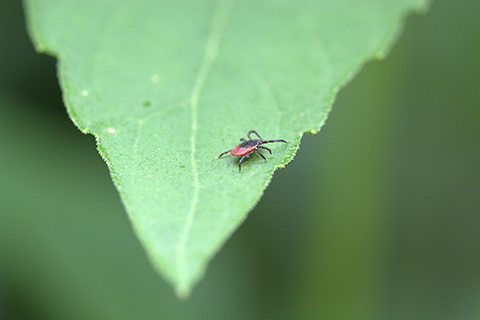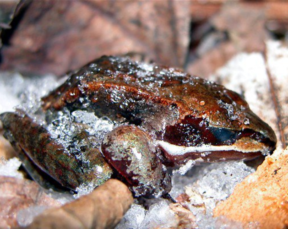

Chances are, if you work or recreate outside in the garden state, it’s very likely that you will become all too familiar with the scourge of deer ticks. These tiny blood feasting parasites reside on woody plant material along trail sides, woodlands, and in our backyards year-round. Unfortunately, these parasites are not only a nuisance but can also be detrimental to our health as their bite can transmit the bacterial infection that causes Lyme disease, as well as other harmful bacterial infections.
While it might come as little surprise that ticks become more active as the weather warms up in early spring, mild winters such as this one can also mean more incidences of tick bites. Of course, these pests do not only prey on deer as their name would suggest; rodents, birds, small mammals, and of course humans all fall victim to their attack. While the bite itself is seldom painful, the lingering symptoms of the disease are a cause of concern, and if left untreated, can lead to painful aching joints, headaches, fatigue, and a number of other unpleasant symptoms.
The ticks that spread the disease are found predominantly in the Northeast and upper Midwest and are a big issue right here in New Jersey. In fact, the Centers for Disease Control and Prevention reported back in 2012, that New Jersey ranked third in the country, after Pennsylvania and Massachusetts, with more than 2,700 new cases of Lyme disease that year. It is believed that as many as 70% of all female deer ticks carry the disease.
According to Shereen Semple, an epidemiologist with the state Department of Health, although Lyme disease is most prevalent in the northwestern counties of Hunterdon, Warren, Sussex, and Morris County, it is endemic throughout the state. “Anyone can get Lyme disease, and all ages are at risk,” said Semple. “Males of all ages tend to have the highest number of cases, but the risk is present for everyone.” It should come as no surprise that those most at risk are anyone who is active outdoors during warm months, but everyone should always consider themselves at risk regardless of the time of year.
The early onset symptoms often are similar to the flu, with fever, headaches, and joint pains, and while there is usually a bullseye rash left behind, this is not always the case. If you happen to find a tick on you always be sure to remove it as soon as possible, and if you suspect it might carry Lyme’s disease you can send it to a lab to have it analyzed. Since early detection is crucial, you should visit your physician to begin a regiment of antibiotics if you test positive for the disease.
Yet, despite the direct threat posed by ticks, none of this is to suggest that we should avoid nature and getting outdoors. Quite the contrary, I would advise everyone to actively explore new open spaces as much as they can, just take a few precautions with you into the field next time! A few useful tips include; tucking your pants into your socks, wearing long-sleeved shirts and applying insect repellents to yourself and your pets before heading out.
Always remember to check yourself frequently once you are back at home whenever you are in area that you suspect may harbor ticks. Remember to check places like the scalp, behind the ears, under the arms, on the ankles, and in the groin, where deer ticks can be hard to see. A little prevention and some careful self-inspection can go a long way to staying safe and enjoying nature.
You can also decrease your chances of encountering ticks by keeping a well-maintained yard, which will discourage ticks from making your backyard their new home, and by always sticking to the trails and not straying too far from the beaten path. Also, avoid areas of dense vegetation and thick underbrush whenever possible. Always remember that dressing accordingly includes protecting yourself from bites and scratches as well as the elements.
So, go ahead and enjoy a trek through the woods, or a stroll along the stream, just be sure and check yourself for these crawling menaces when you’re all finished!


